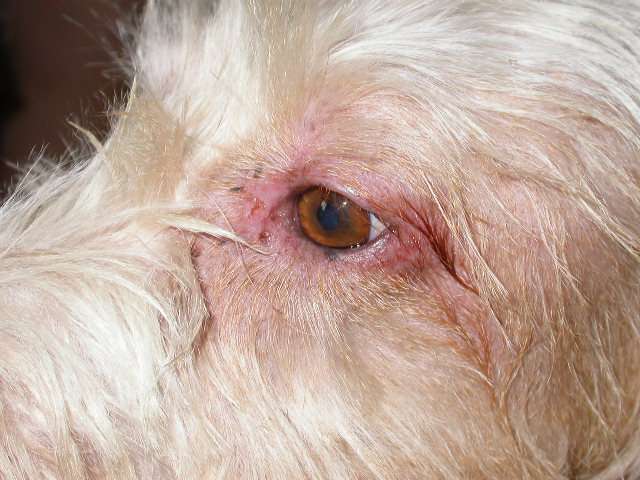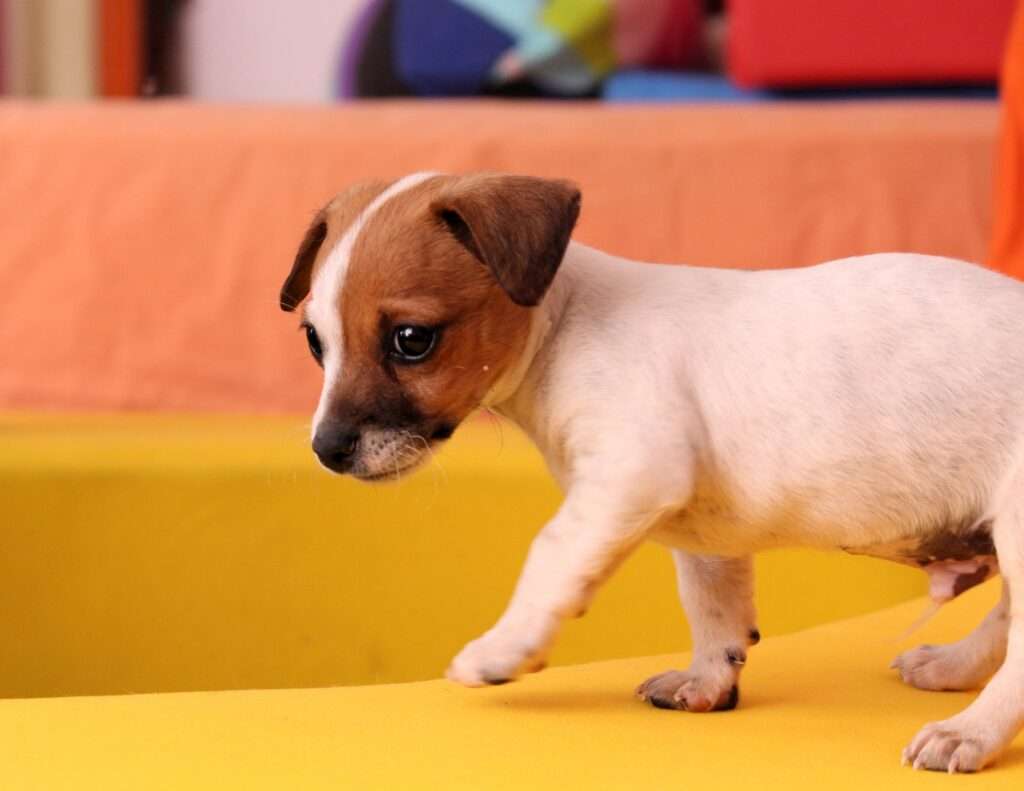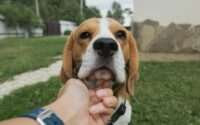Dog Losing Hair in Patches and Scabs? Discover the Root Causes and Effective Treatments
As dog owners, we know that our furry companions are not just animals, but cherished members of our family. Our furry friends bring us joy, companionship, and unconditional love, making it essential to provide them with the care they need to live a happy and healthy life.
That’s why it can be alarming to see our dogs losing hair in patches and developing scabs. Not only can these conditions affect a dog’s appearance, but they can also be indicative of underlying health issues that require prompt attention.
In this comprehensive guide, we’ll dive into the causes of hair loss and scabbing in dogs, how it affects their health, and when to seek veterinary help. We’ll also explore common treatments and preventative measures, as well as tips for living with a dog with hair loss and scabbing.
Understanding Dog Hair Loss

Alopecia, or hair loss in dogs, can be triggered by numerous factors such as:
- Allergies: Dogs can develop allergies to various substances, such as food, pollen, or flea bites. These allergies can cause inflammation and itching, leading to hair loss.
- Parasites: Fleas, ticks, and mites can all cause hair loss in dogs. These parasites can irritate the skin, causing dogs to scratch and chew, leading to hair loss.
- Hormonal imbalances: Dogs with hormonal imbalances, such as hypothyroidism or Cushing’s disease, can experience hair loss as a symptom of their condition.
- Infections: Bacterial, fungal, and yeast infections can all cause hair loss in dogs, often accompanied by scabbing and inflammation.
- Genetics: Some breeds are more prone to hair loss than others. For example, breeds such as Chihuahuas and Chinese Cresteds are known for their hair loss patterns.
Hair loss can affect a dog’s self-esteem and may even lead to secondary health issues such as skin infections. Therefore, it’s essential to seek veterinary help if you notice your dog experiencing hair loss.
Understanding Dog Scabbing
Scabbing in dogs, also known as crusts, can be caused by a variety of factors, including:
- Skin infections: Bacterial, fungal, and yeast infections can all cause scabbing in dogs. These infections can be secondary to other skin conditions, such as allergies or hormonal imbalances.
- Parasites: Fleas, ticks, and mites can all cause scabbing in dogs, often accompanied by itching and inflammation.
- Trauma: Dogs who scratch, lick, or bite their skin excessively can cause scabbing to form. Trauma can also be caused by injuries or other skin conditions.
- Allergies: Dogs can develop scabbing as a result of allergic reactions to food, pollen, or other substances.
Scabbing can be uncomfortable for dogs and can lead to further skin issues if left untreated. If you notice your dog developing scabs, it’s important to seek veterinary help to determine the underlying cause and appropriate treatment.
Hair Loss and Scabbing Together
Hair loss and scabbing are common skin conditions in dogs, and when they occur together, it’s usually an indication of an underlying health issue. Some of the most common causes of hair loss and scabbing together in dogs include:
- Autoimmune disorders: Autoimmune disorders occur when the immune system attacks healthy cells in the body, including those in the skin. This can lead to hair loss and scabbing.
- Endocrine disorders: Hormonal imbalances caused by endocrine disorders like hypothyroidism or Cushing’s disease can lead to various skin problems, including hair loss and scabbing in dogs.
- Nutritional deficiencies: Nutritional deficiencies, such as a lack of essential fatty acids or vitamins, can affect a dog’s skin health, leading to hair loss and scabbing.
- Inflammatory skin conditions: Dogs can experience both hair loss and scabbing due to inflammatory skin conditions like atopic dermatitis or seborrheic dermatitis.
- Parasites: Parasites such as fleas, ticks, and mites can irritate the skin, leading to hair loss and scabbing.
If your dog is experiencing both hair loss and scabbing, it’s important to seek veterinary help as soon as possible. Your veterinarian can perform diagnostic tests to determine the underlying cause and develop an appropriate treatment plan.
Treatment may include medication, changes in diet or environment, or topical treatments. Ignoring these symptoms can lead to further health issues for your furry friend, so it’s important to be proactive in managing your dog’s skin health.
Diagnosis and Treatment
If you notice your dog experiencing hair loss and scabbing, it’s essential to seek veterinary help to determine the underlying cause and appropriate treatment. Your veterinarian may perform various diagnostic tests, including skin scrapings, blood tests, and allergy testing, to determine the cause of your dog’s symptoms.
Once a diagnosis is made, treatment can vary depending on the underlying cause. There are several common treatments for hair loss and scabbing in dogs, including:
- Topical treatments: Topical treatments like sprays, shampoos, or ointments may be recommended by your veterinarian based on the underlying cause of your dog’s hair loss and scabbing. These treatments can be effective in managing symptoms and promoting healing of the affected areas.
- Oral medications: Your veterinarian may recommend various oral medications to treat your dog’s hair loss and scabbing, including antibiotics, antifungal medications, or corticosteroids.
- Allergy management: If your dog’s hair loss and scabbing are caused by allergies, your veterinarian may recommend allergy testing and management strategies, such as allergy shots or a change in diet.
- Parasite control: If parasites such as fleas or ticks are causing your dog’s hair loss and scabbing, your veterinarian may recommend parasite control products to eliminate the infestation.
- Hormonal therapy: If your dog’s hair loss and scabbing are caused by hormonal imbalances, your veterinarian may recommend hormonal therapy to manage the underlying condition.
Living with a Dog with Hair Loss and Scabbing

Caring for a dog with hair loss and scabbing can be challenging, but with the right approach, you can effectively manage your furry friend’s symptoms and enhance their quality of life. Here are some tips for living with a dog with hair loss and scabbing:
- Follow your veterinarian’s treatment plan: Once your dog has been diagnosed, it’s essential to follow your veterinarian’s treatment plan to manage their hair loss and scabbing. This may include topical treatments, oral medications, allergy management, parasite control, or hormonal therapy.
- Monitor your dog’s symptoms: Keep an eye on your dog’s hair loss and scabbing, and report any changes or worsening symptoms to your veterinarian.
- Provide a healthy diet: A healthy diet can help improve your dog’s skin health and reduce the risk of further hair loss and scabbing. Talk to your veterinarian about the best diet for your furry friend.
- Manage your dog’s environment: Avoid exposing your dog to allergens or irritants that may exacerbate their hair loss and scabbing. Keep their living area clean and free of parasites.
- Offer plenty of love and attention: Dogs with hair loss and scabbing may be uncomfortable or self-conscious, so offering plenty of love and attention can help boost their mood and confidence.
Hair loss and scabbing in dogs can be caused by a variety of factors and can indicate underlying health issues that require veterinary attention. With the right care, you can help manage your furry friend’s symptoms and improve their quality of life.
Conclusion
As a pet parent, it’s important to be aware of the signs and symptoms of hair loss and scabbing in dogs. By monitoring your furry friend’s skin and seeking veterinary help at the first sign of trouble, you can help manage their symptoms and prevent further health issues.
It’s crucial to remember that each dog is unique, and what may work for one furry friend may not be effective for another. Working closely with your veterinarian to determine the underlying cause of your dog’s hair loss and scabbing and developing a customized treatment plan is essential for their health and happiness.
At BarkLikeMeow, we understand the importance of your dog’s health and well-being, and we encourage you to be proactive in managing their skin health. When we provide our furry friends with personalized care, attention, and love, we can help them lead a happy and healthy life.
Frequently Asked Questions
What are some common causes of hair loss in dogs?
Some common causes of hair loss in dogs include allergies, infections, hormonal imbalances, and genetics.
How can I tell if my dog is experiencing hair loss?
You may notice that your dog has patches of hair missing, or that they are scratching or biting at their skin more than usual. You may also notice scabs or inflammation on their skin.
Are there any treatments for hair loss in dogs?
Treatment for hair loss in dogs will depend on the underlying cause. Your vet may recommend medication, dietary changes, or topical treatments to help manage the condition.
Are there any breeds that are more prone to hair loss?
Yes, some breeds are more prone to hair loss than others. For example, the Pomeranian breed is known to experience a form of genetic hair loss called Alopecia X.
Can stress cause hair loss in dogs?
Yes, stress can be a contributing factor to hair loss in dogs. If your dog is experiencing stress or anxiety, it can lead to excessive grooming or scratching, which can cause hair loss.
Can diet affect my dog’s hair loss?
Yes, diet can play a role in your dog’s hair loss. If your dog is not getting enough of certain vitamins or minerals, it can lead to hair loss or a dull coat. Your vet may recommend dietary changes or supplements to help improve your dog’s coat health.
Is it normal for dogs to shed hair?
Yes, it is normal for dogs to shed hair. However, excessive shedding or hair loss can be a sign of an underlying health condition.
Can fleas or ticks cause hair loss in dogs?
Yes, fleas and ticks can cause hair loss in dogs. These parasites can cause itching and irritation, which can lead to hair loss or scabs on the skin.
Can over-bathing cause hair loss in dogs?
Yes, over-bathing or using harsh shampoos can strip your dog’s skin and coat of natural oils, which can lead to hair loss or dry, itchy skin.
How can I prevent hair loss in my dog?
Preventing hair loss in your dog will depend on the underlying cause. Regular grooming, a healthy diet, and regular vet check-ups can help keep your dog’s coat healthy. If you notice any signs of hair loss or skin irritation, it’s important to consult with your vet to determine the underlying cause and appropriate treatment.







